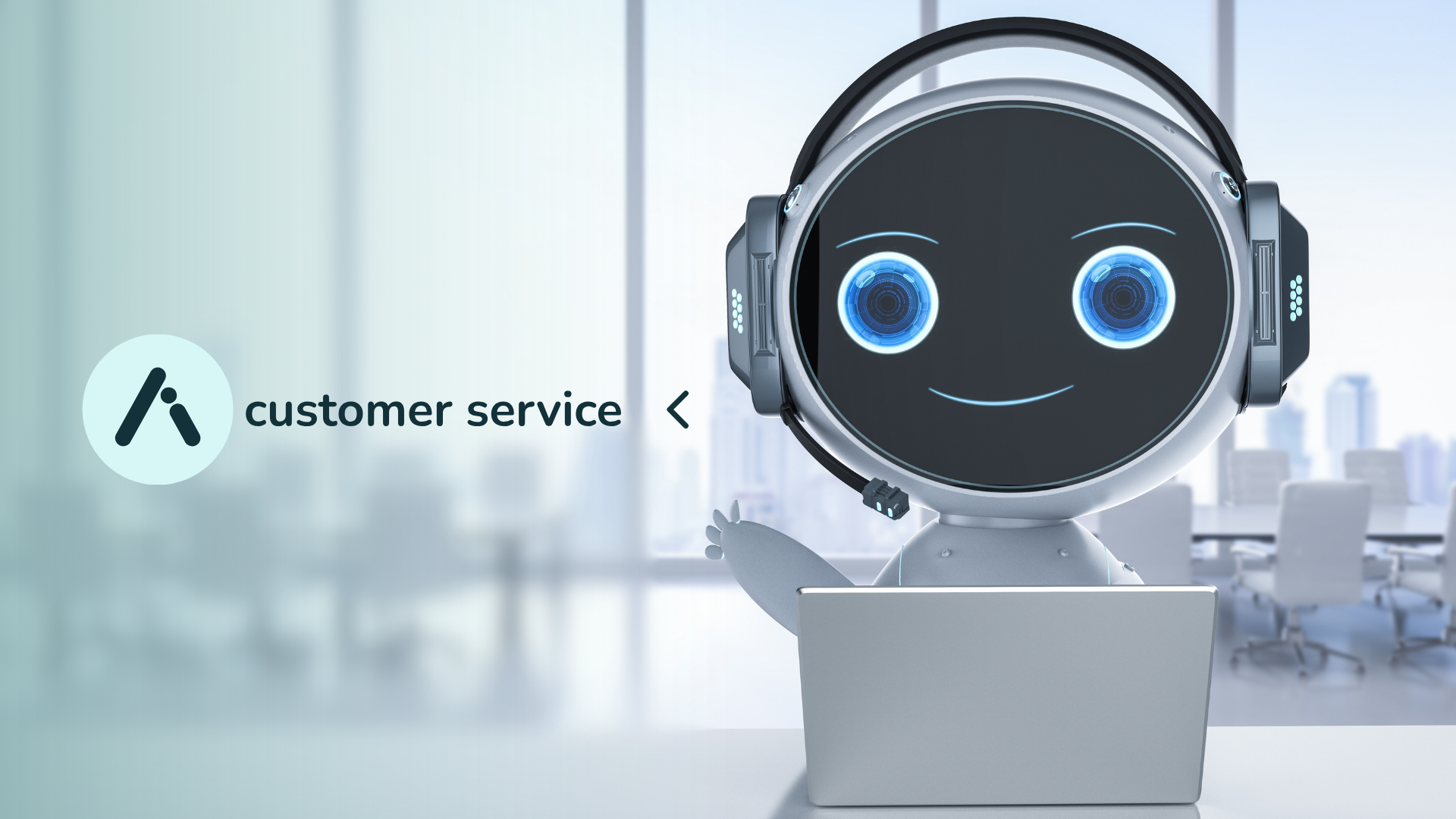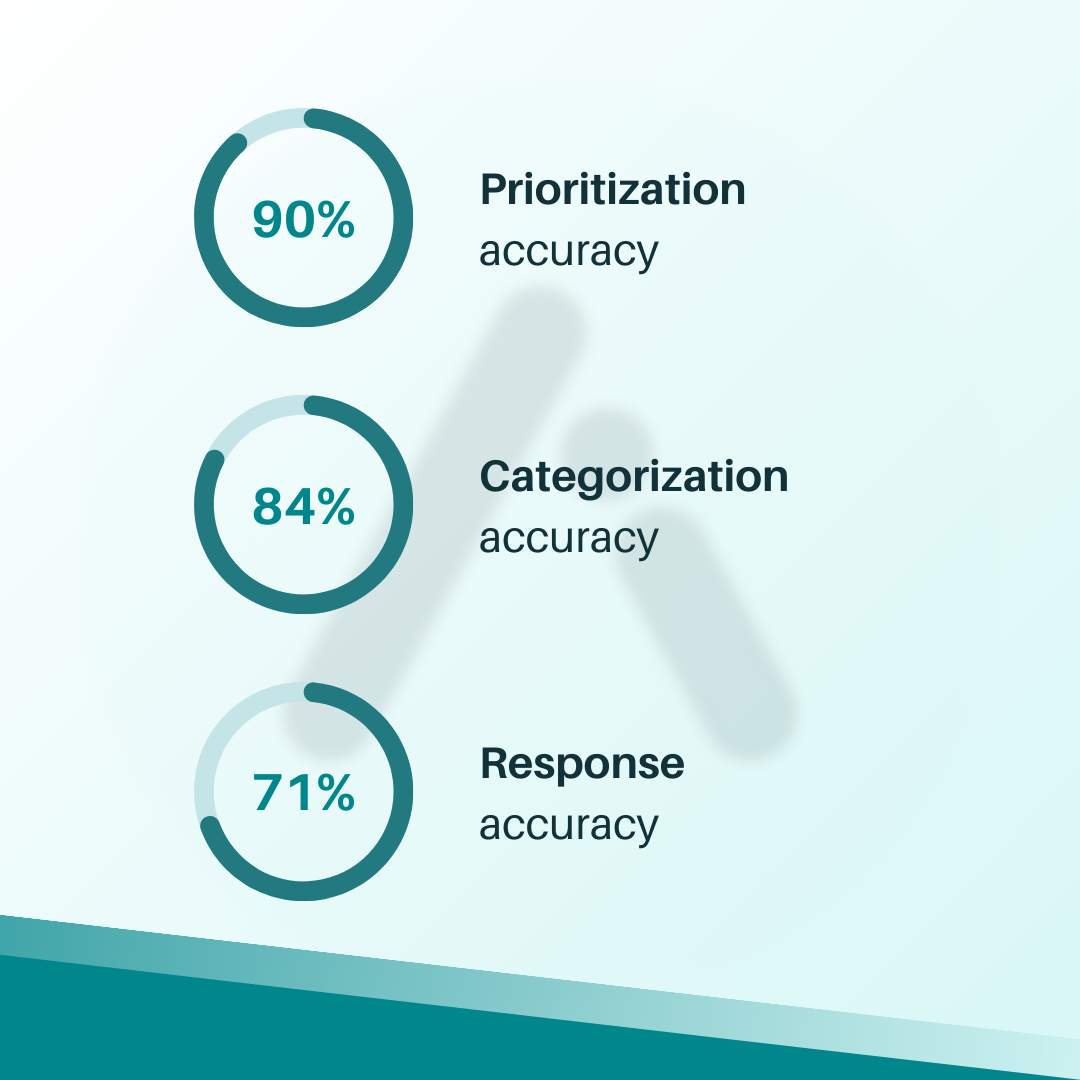
What Can We Achieve with Artificial Intelligence in Customer Service?
Written by Danubius IT Solutions
Artificial intelligence (AI) has emerged as a transformative force and our team here, at Danubius embarked on an ambitious journey to explore the real impact of AI's practical applications in enhancing customer support. The adventure began a little over half a year ago with an internal project that aimed to not just theorize but actualize the potential of AI-based solutions in real-world scenarios. This article describes the proof of concept and the results we have managed to achieve in enhancing customer service with our AI solution.
The Semantic Leap
At the heart of our approach to enhancing customer service through AI lies the concept of semantic search. Unlike traditional keyword-based search mechanisms, which often fail in the face of inexactness and context variability, semantic search represents a leap forward. It leverages the nuances of language, understanding the intent and meaning behind customer queries, thus enabling a search across extensive datasets of diverse quality levels.
Semantic search is built on the foundation of context and intent . It transcends the limitations of conventional search algorithms by interpreting the underlying meanings of words in vast datasets, rather than relying solely on their presence or frequency. This approach is especially critical in customer service, where queries can be complex, nuanced, and varied in their expression.
The backbone of our semantic search capability is a vector database, compiled and supported by OpenAI's Large Language Models (LLMs). These models are adept at converting vast amounts of text into high-dimensional space vectors, representing the semantic relationships between words and phrases. By integrating our vectorized databases with these LLMs, we created a dynamic and robust infrastructure capable of interpreting and processing customer queries with remarkable precision.
This integration marks a significant advancement in AI-driven solutions, as it allows for an outstanding level of precision in understanding and responding to customer inquiries. The ability to grasp the essence of customer queries, irrespective of the variations in phrasing or the quality of the text, sets our customer service solution apart, making it more responsive and effective.
The Proof of Concept
On our ambitious journey, we sought to unlock the potential of AI in customer service. One of our side ventures, a startup that we launched six years ago, has grown significantly over the years, now serving over 1,500 enterprise customers. However, faced with a constant stream of emails, the challenge was evident: could AI significantly improve the response time of our client service team?
This project was far more than an experiment; it was a crucial proof of concept aimed at resolving a fundamental question that drives our mission—can AI truly assist users in a meaningful way? Driven by this, we committed ourselves to envision and actualize the potential of AI in elevating customer service efficiency.
Building the Solution
To tackle this challenge, we crafted an innovative customer service support application, harnessing the latest AI technology to parse emails.
This system was meticulously designed to extract essential information and categorize inquiries with incredible efficiency. Although initially our success rate in categorizing emails accurately was just a modest 30%, we were determined to push the boundaries of what our solution could achieve. We embarked on a rigorous process of refining our model through extensive training rounds, feeding it three rounds of 500 emails where each email was categorized correctly by human customer support agents. This dedication bore fruit, dramatically enhancing our automated categorization accuracy rate to an impressive 84%.
Enhancing Response Capabilities
Our ambitions didn't end at classification. Integrating our AI system with our startup’s knowledge base marked a turning point. By employing advanced semantic matching techniques through vector comparison, our model gained the ability to draw relevant information from the database and draft response letters with great relevance and precision. This process involved breaking down customer inquiries into smaller parts, and accurately retrieving the necessary data through API endpoints.

Achieving the capability to generate correct and contextually relevant responses was a significant milestone in our quest, demonstrating the transformative power of AI in tackling complex, real-world challenges.
Overcoming Challenges
Each step, from the initial classification to the fine-tuning of our models and the retrieval of information from the knowledge base presented its own set of hurdles. However, these challenges proved to be invaluable opportunities for growth and learning.
One of the most essential lessons we learned through this process was the importance of data privacy and security. Recognizing the concerns surrounding AI and data confidentiality, we made sure that our models operated exclusively on European servers, offering our clients peace of mind regarding the safety and privacy of their data. This commitment to privacy and security is fundamental to our approach.
Insights and Achievements
Our journey into integrating AI unveiled pivotal realizations, fundamentally reshaping our approach towards technological adoption. The fact that we could access and use APIs from major tech companies affordably was a significant boost to our project’s success. This actually makes AI adoption viable for a broader spectrum of businesses and also helps dismantle the cost barrier to sophisticated AI tools, which can lead to a new era of cost-effective technological empowerment.
Yet, the initial euphoria of accessing these out-of-the-box solutions soon gave way to a deeper understanding. We discovered that a more nuanced approach was necessary. Off-the-shelf solutions, while beneficial, required extensive customization to fully harness their potential. It was through this lens of customization and hands-on fine-tuning that we were able to transform these tools from generic solutions into strategic assets.
The Transformative Impact
The infusion of AI into our customer service processes has truly reformed the way we deal with customer support: it increased operational efficiency as well as improved the qualitative aspects of customer engagement. The technological integration has enabled us to achieve a new level of responsiveness and personalization, significantly elevating the customer service experience. Our firsthand experience underscores the transformative potential of AI in redefining customer interactions, bridging the gap between human ingenuity and AI to forge great customer experiences.
This journey has underscored the dynamic nature of AI technology and the necessity for continuous adaptation and learning to stay ahead. Looking forward, we are inspired by the numerous possibilities that AI presents in enhancing every facet of customer service, leading to a future where AI not only supports but enriches our customer interactions.
Looking Forward with AI
It's clear that AI's role and impact in customer service is vital, and no business can avoid its implementation if they want to keep the pace with competitors. Of course, in this project, we've only scratched the surface of what's possible but we're committed to exploring further, leveraging our gained knowledge and experience to innovate continuously and try to open new frontiers with AI in software development.
If you're looking to embark on your AI-based solution journey in customer service or any other domain, let our expert software engineers be your guide. With our expertise we can help you through the complexities of AI implementation and ensure success every step of the way.
Interested in IT solutions tailored to your business? Contact us for a free consultation, where we'll collaboratively explore your needs and our methodologies.

.png?alt=media&token=6167f0c8-f152-4da9-8498-30e472899817)
.jpg?alt=media&token=7f5e6011-729e-4df8-bbe4-e97d3ab885a8)

